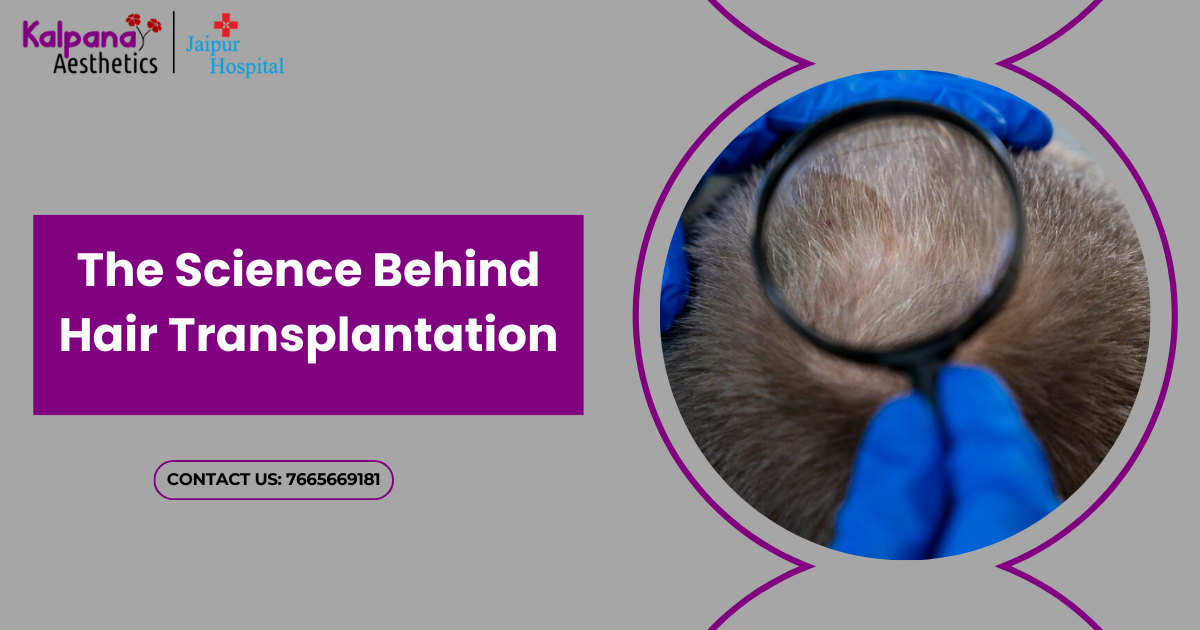Hair loss can be a distressing experience, affecting self-esteem and overall quality of life. Fortunately, advancements in medical science have led to effective solutions, one of which is hair transplantation. This procedure has gained immense popularity, especially in urban areas where the demand for aesthetic treatments has surged. For those seeking a solution, finding the best hair transplant in Jaipur can be a pivotal step towards restoring confidence and achieving natural-looking results. In this article, we will explore the scientific principles behind hair transplantation, including the techniques, biological mechanisms, and advancements in this field.
Understanding Hair Loss
Understanding the underlying reasons of hair loss is crucial before diving into the science of hair transplantation. The most prevalent kind of hair loss is androgenetic alopecia, often known as male or female pattern baldness. Hormonal changes caused by this hereditary disorder cause hair follicles to shrink, resulting in thinner hair and eventually hair loss. Stress, dietary deficits, illnesses, and some drugs are additional causes that might cause hair loss.
Hair Transplant Techniques
Relocating hair follicles from a donor site—typically the back or sides of the head—to an area that is balding or thinning is known as hair transplantation. There are two main methods that are frequently employed:
Follicular Unit Extraction (FUE):
- In FUE, a specialized punch instrument is used to remove individual hair follicles from the donor location. Compared to prior procedures, the little, round scars left by this technique are typically less apparent. To provide a realistic appearance, the removed follicles are subsequently strategically implanted into the recipient area.
Follicular Unit Transplantation (FUT):
- A strip of scalp is removed from the donor site during FUT, and it is subsequently divided into separate follicular units. A linear scar is left behind after the scalp is sutured back together. Some patients may be concerned about the more noticeable scar, even though this technique can produce more grafts in a single session.
The Biological Mechanism of Hair Growth
To understand how hair transplantation operates, one must have a solid understanding of the biology of hair growth. The hair growth cycle is a three-phase cyclical process of growth, rest, and shedding that occurs in hair follicles:
Anagen Phase (Growth):
- This stage, which lasts for several years, is known as active growth. The new cells that make up a hair strand are produced by hair follicles. Genetics affects the length of the anagen phase, which varies from person to person.
Catagen Phase (Transition):
- A brief period of transition lasting a few weeks is known as the catagen phase. Growth slows as hair follicles diminish. The hair strand separates from the follicle but stays in situ throughout this stage.
Telogen Phase (Rest):
- Hair is inactive and may eventually fall out during this phase, which lasts for several months. Old hair is pushed out by the growth of new hair at the end of the telogen phase.
During a hair transplant, the goal is to move hair follicles in the anagen phase to the recipient site, ensuring that the transplanted hair will continue to grow naturally.
Factors Influencing Hair Transplant Success
The success of a hair transplant depends on several factors, including:
- Quality of Donor Hair: Healthier and thicker hair follicles from the donor site yield better results.
- Surgeon’s Expertise: An experienced surgeon can enhance the aesthetic outcome by ensuring proper graft placement and angling.
- Patient’s Health: A patient’s overall health, including factors like blood circulation and healing ability, can affect recovery and results.
Innovations in Hair Transplantation
Advancements in technology have significantly improved the efficacy and safety of hair transplants. Some noteworthy innovations include:
- Robotic Hair Restoration: Robotic systems can assist in FUE procedures by improving precision and reducing the time taken for extraction.
- Platelet-Rich Plasma (PRP) Therapy: This treatment involves using the patient’s blood to extract growth factors, which can stimulate hair follicles and improve hair growth in conjunction with transplantation.
- Bioenhancement Techniques: Researchers are exploring ways to enhance the survival rate of transplanted follicles using cellular therapies, stem cells, and various growth factors.
Post-Operative Care
Proper post-operative care is crucial for ensuring the success of the hair transplant. Patients are typically advised to follow these guidelines:
- Avoid Strenuous Activities: Engaging in heavy exercise can strain the scalp and affect healing.
- Gentle Hair Care: Using mild shampoos and avoiding harsh chemicals can protect the transplanted area.
- Follow-Up Appointments: Regular follow-ups with the surgeon ensure that the healing process is progressing as expected.
Conclusion
Hair transplantation is a remarkable solution for hair loss, rooted in scientific principles and innovative techniques. Understanding the underlying biology and mechanisms can help individuals make informed decisions about their treatment options. For those considering this procedure, finding the best cosmetic surgery clinic in Jaipur can be a key factor in achieving successful and satisfying results. With advancements in technology and a focus on patient care, hair transplantation continues to evolve, offering hope and confidence to those seeking to restore their hair and self-esteem.





Comments